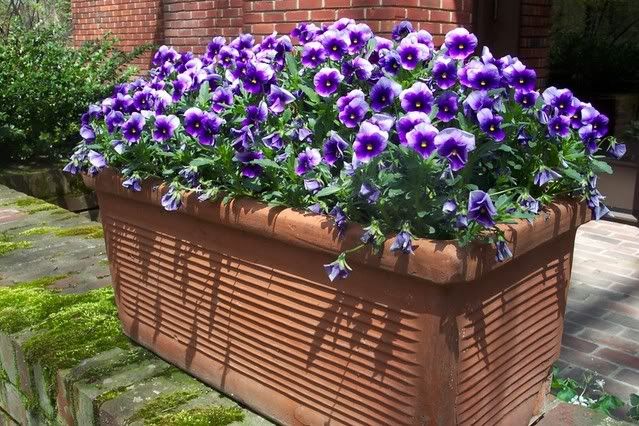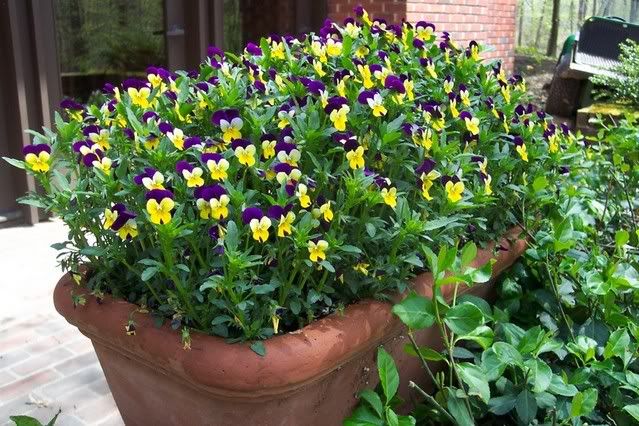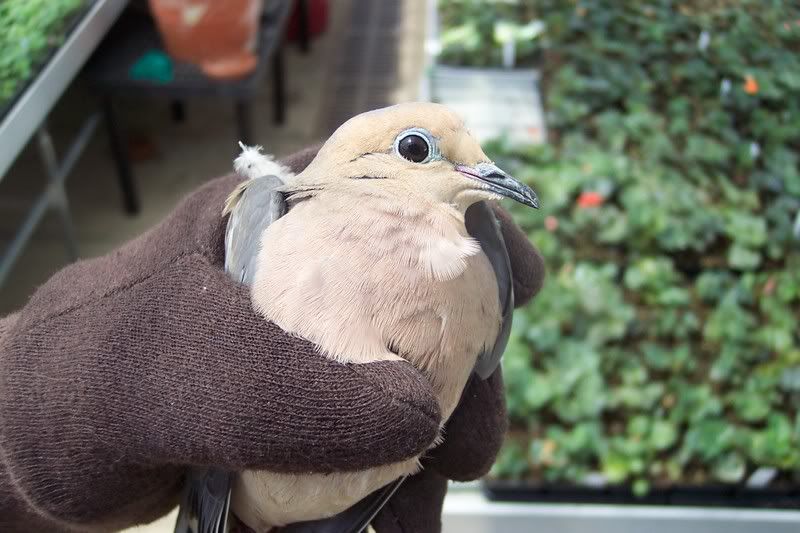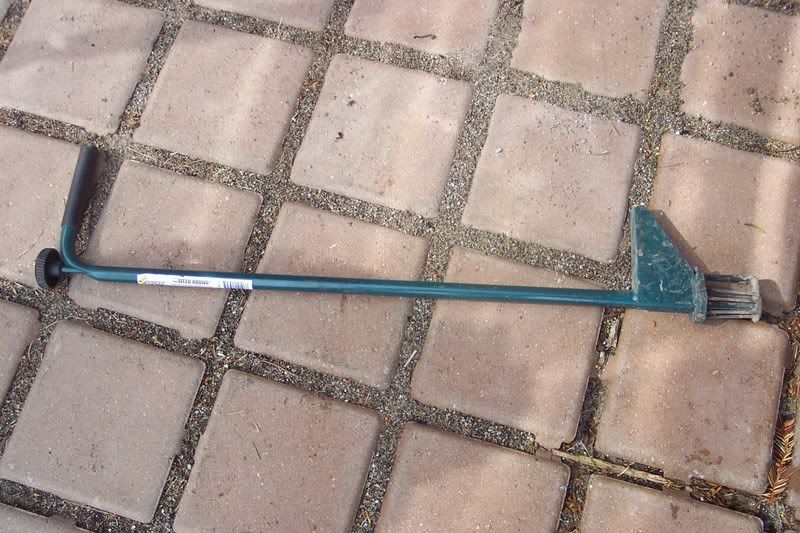Whole books are written on the subject of propagating plants by cuttings. In today’s post, we’ll show what we do to propagate some of our favorite plants.
Here are two different “mother plants”, the plants that will provide us with the cuttings we need. On the left is a Strobilanthes (sometimes known as Persian Shield) On the right Iresine (also known as Chicken Gizzard):
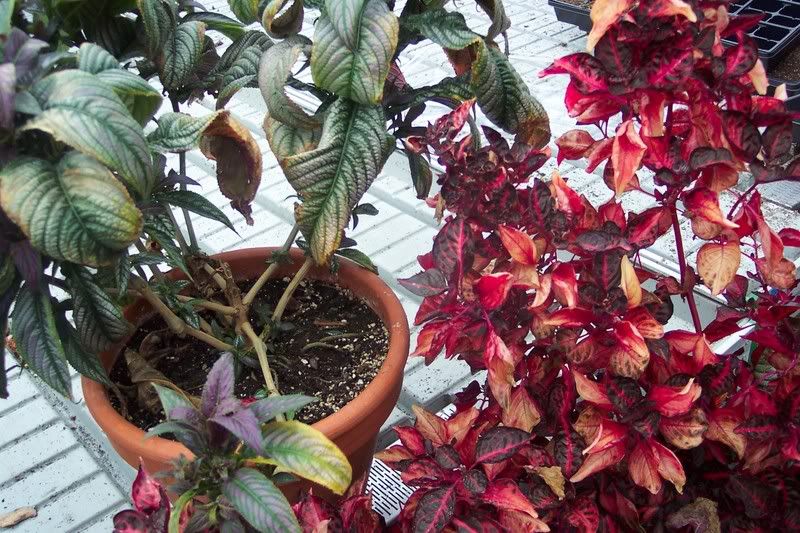
It often helps to use a low concentration rooting powder to start these cuttings. In this case, we use #1 Hormex:
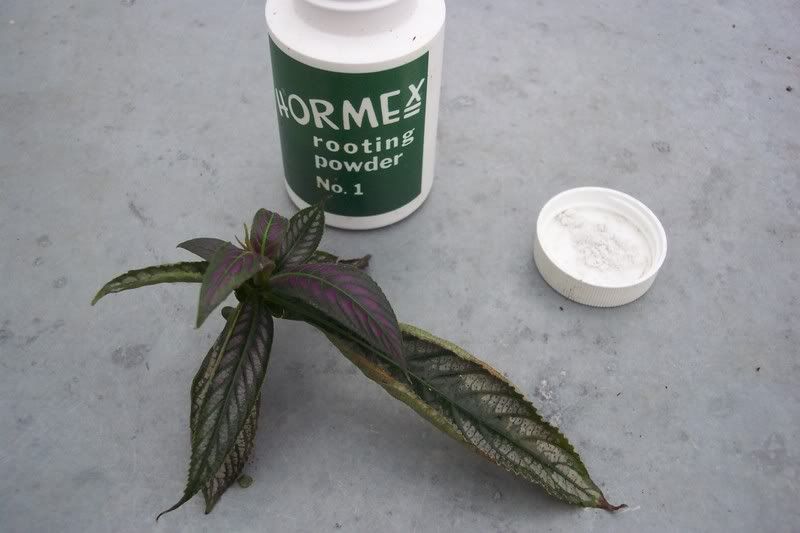
Use only a small amount of rooting hormone, dip just the tip into the powder and knock off the rest of it with a tap of your finger. Don’t use as much powder as they show on the package, too much will inhibit rooting:
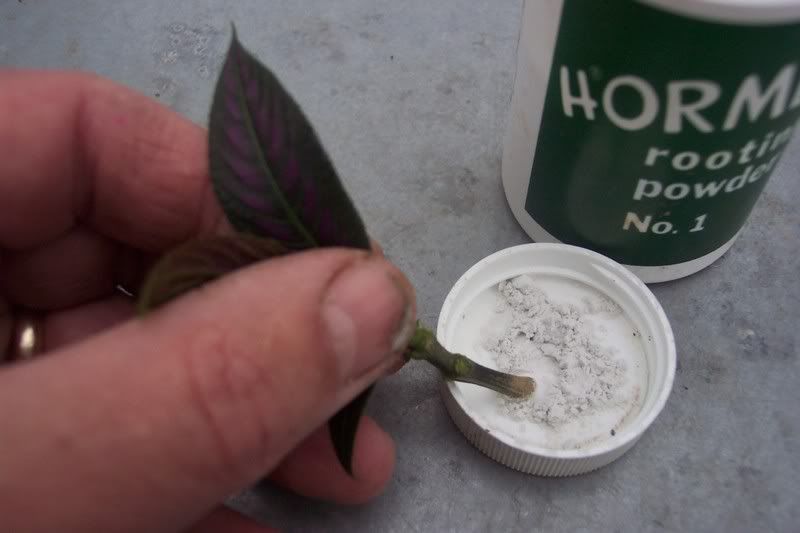
For either of these plants, the cuttings can be taken from anywhere on the plant, just be sure to take at least two nodes:
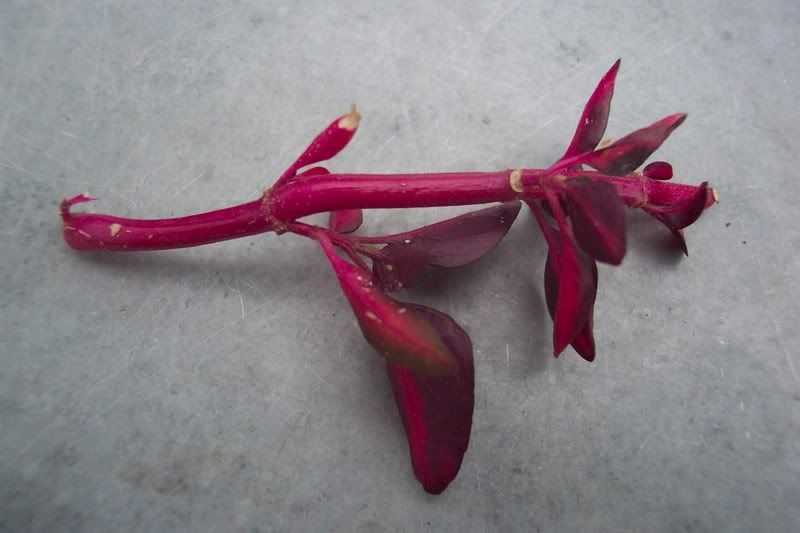
For rooting medium, use sterilized sand, perlite, peat moss or a mixture of any of these. We use specially manufactured foam blocks, but you don’t need anything that fancy:
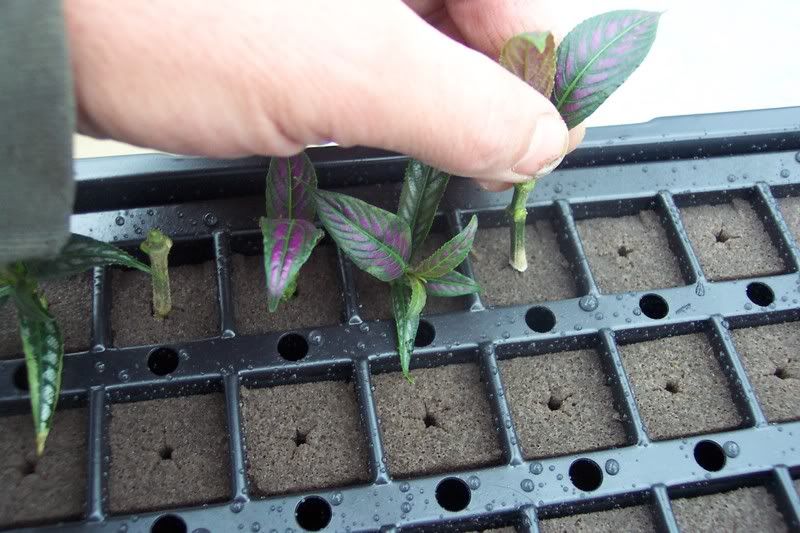
The cuttings are placed in the medium, covered with plastic and placed in a warm area out of direct sunlight. Open your plastic once, or better yet, twice a day to allow for air movement. When you see new leaves growing on top and roots growing out the bottom of the container, then you know it is time to move the cuttings into a bigger container using your regular potting mix. Then you can gradually expose it to more light.
Some easy rooting plants, like this Coleus, can just simply placed into water and rooted.

Just be sure to plant the cutting into a potting mix as soon as you notice roots forming. Cutings left too long in water have a hard time adjusting to growing in soil.
Softwood cuttings (from shrubs) cut from new growth made this spring can be taken after the leaves have fully opened but the stem is still soft…let’s say, maybe until early June. These type of cuttings wilt very easily so be careful not to let them dry out.
Fleshy plants such as Jade Plants only need a leaf to root and form a new plant. Just take a leaf off of the plant and place it on the surface of the soil and it will take root. These are called leaf cuttings.
Hardwood stem cuttings are taken after the leaves have fallen off of the plant in the autum, through winter and into spring. One year old wood is required for rooting, older wood will generally not work. Again you need 2-3 nodes with the cutting being about 4 to 8 inches long. Bury the cutting in the cutting medium so that the top node is an inch or so above the surface. These are the most difficult type of cuttings to root successfully.
Boy,oh boy, there is so much ground to cover on this subject…and we just don’t have the time right now to write an e-book about propagation by cuttings.  This gives you most of the basics, however. As the season progresses, we will try to post more suggestions regarding plant propagation.
This gives you most of the basics, however. As the season progresses, we will try to post more suggestions regarding plant propagation.
In the meanwhile, have fun and experiment.
Bob and Judy
